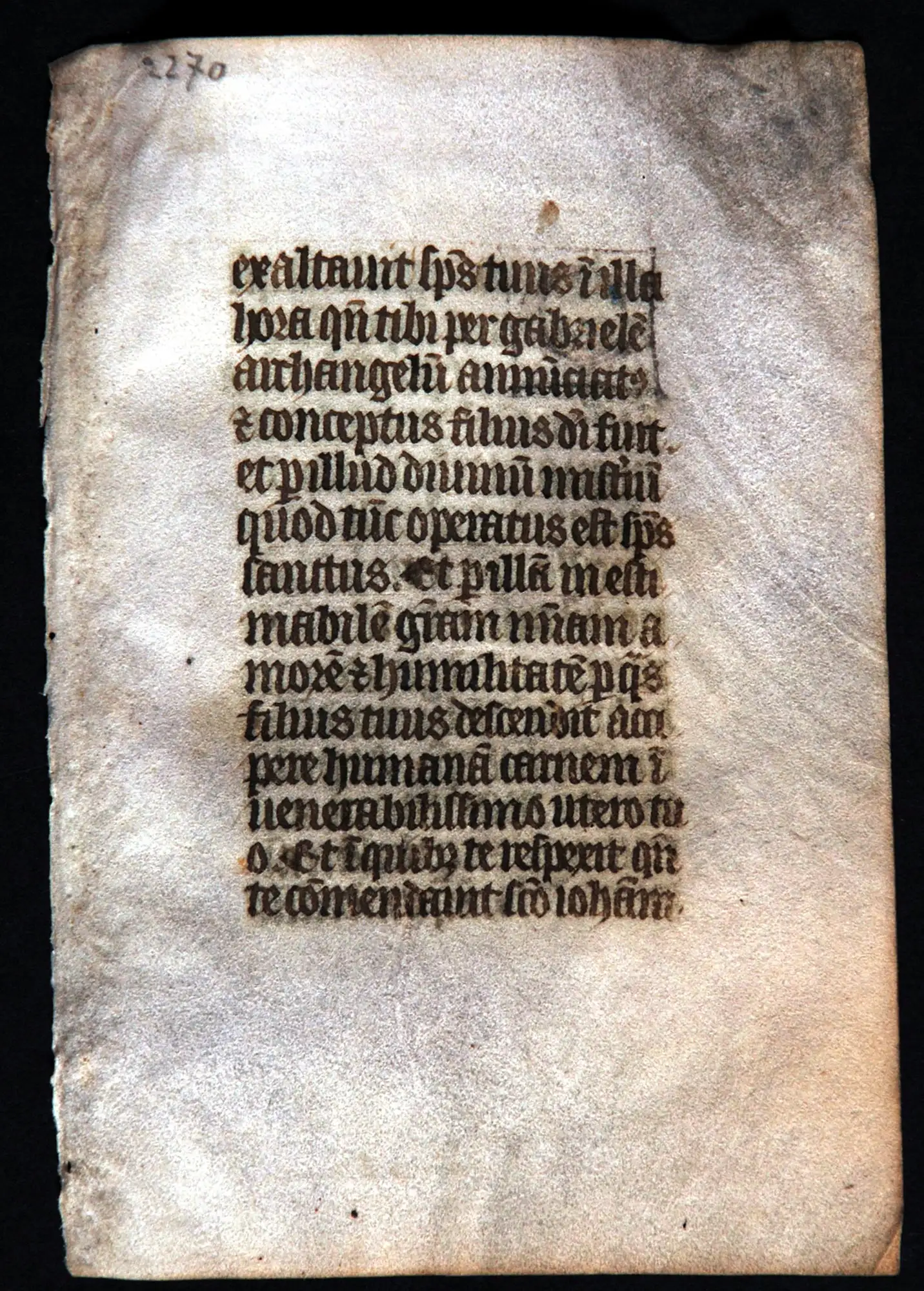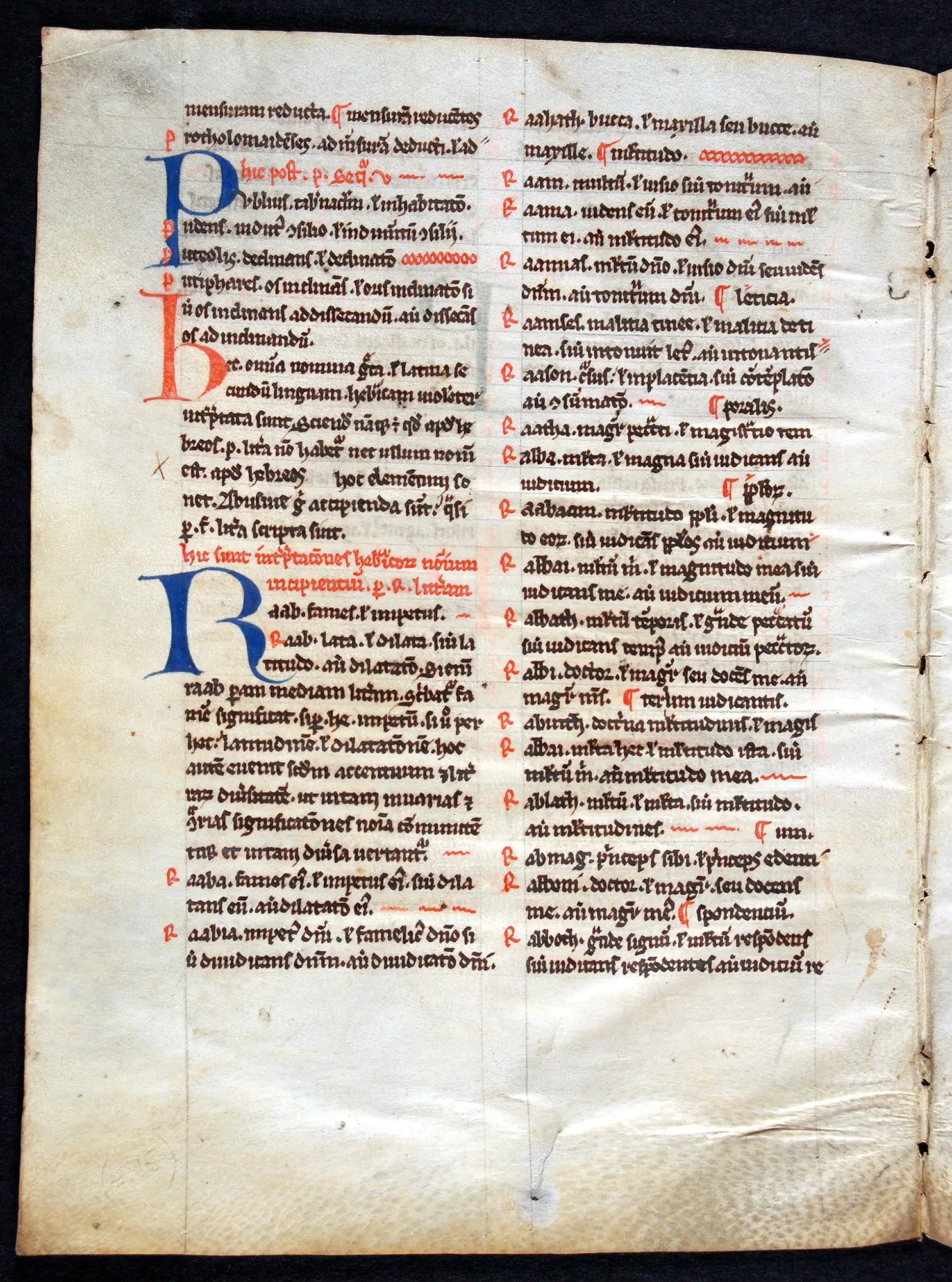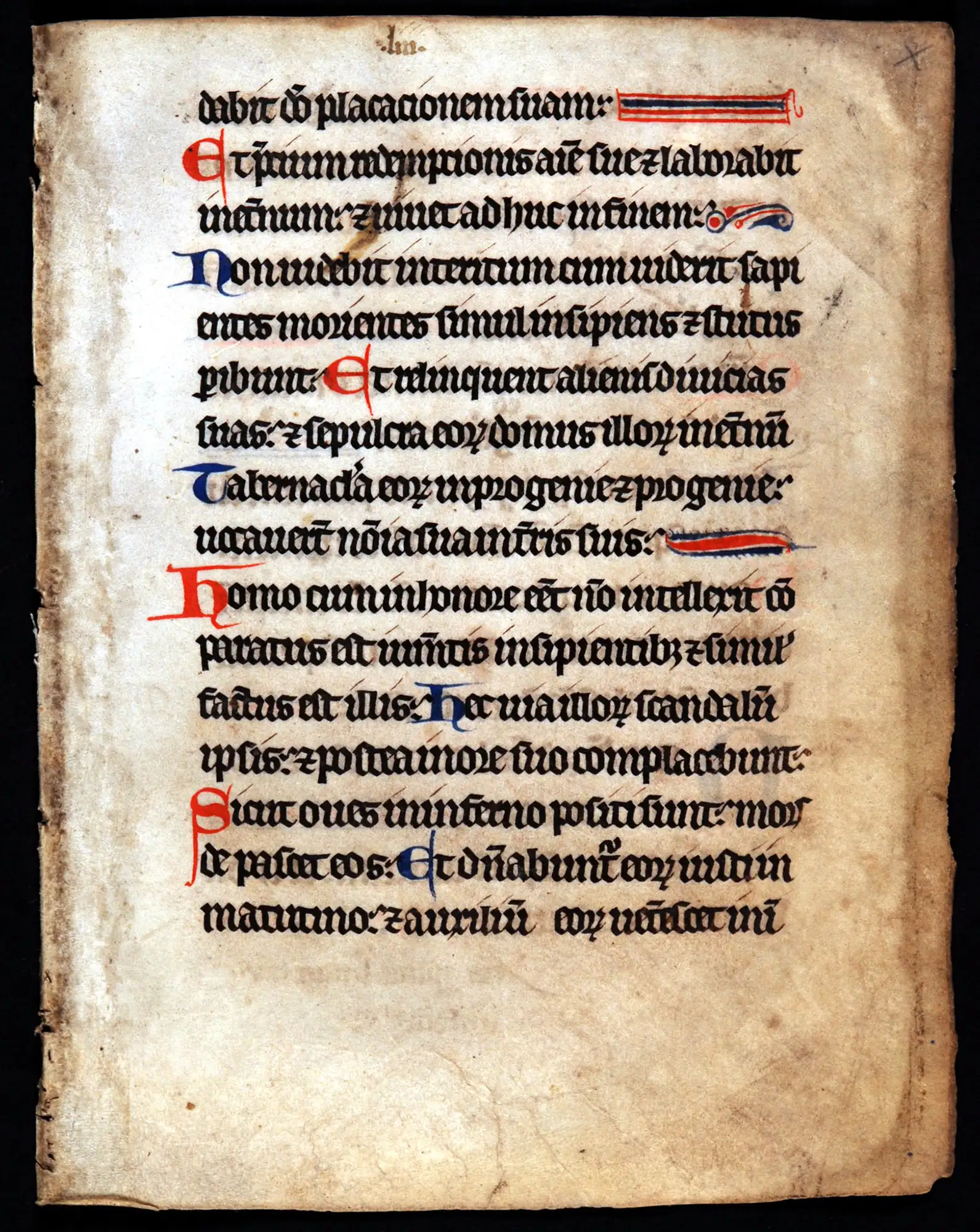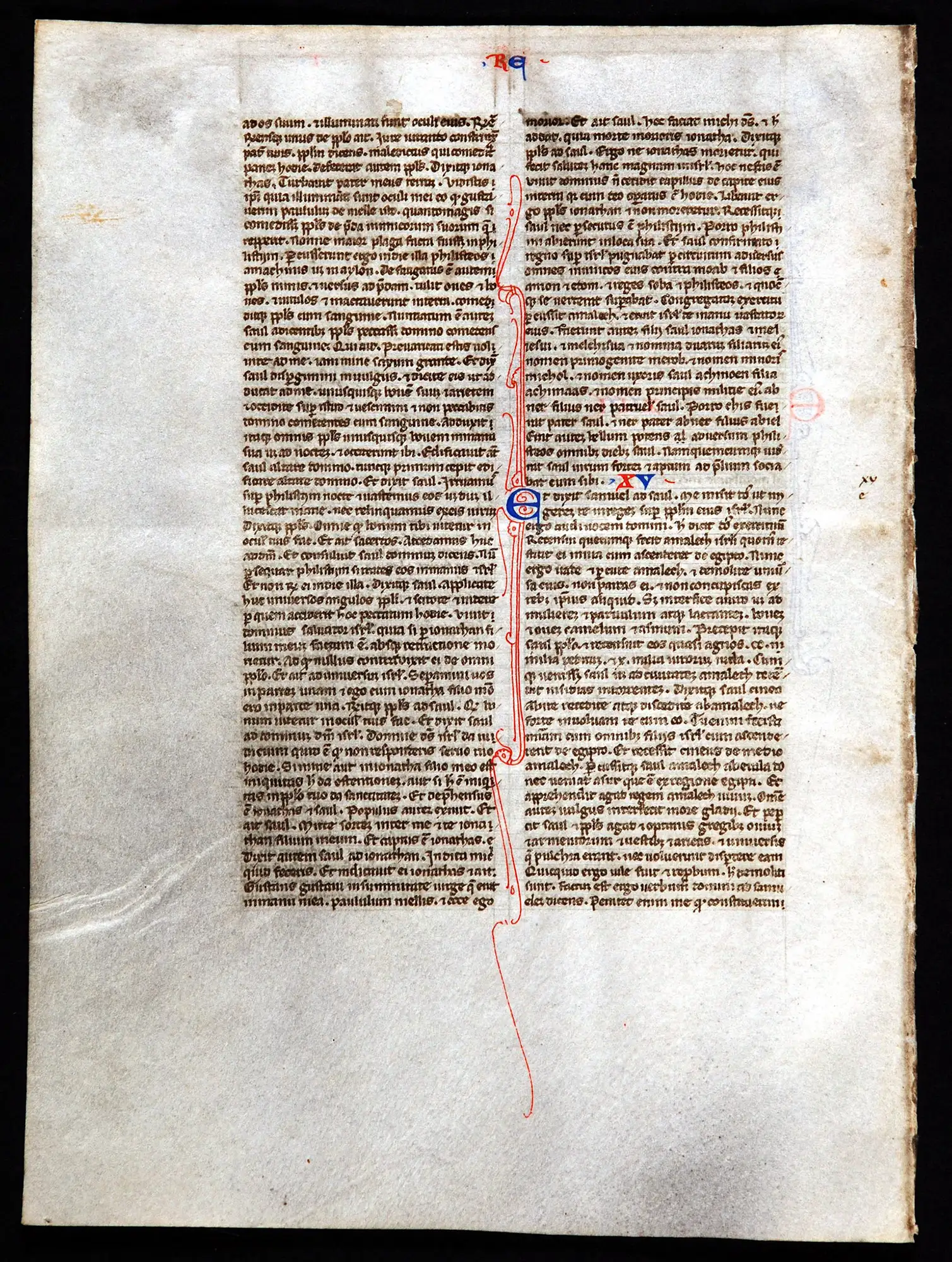Case 7

Single leaf from a Book of Hours, in Latin. France, second half of fifteenth century. Reed MSF35.
Many medieval manuscripts contain sumptuously decorated letters and miniature paintings rich in colour and gold. But many surviving manuscripts had no decoration whatsoever, such as MSF35.
The text is part of the Obsecro te and is written in a Gothic liturgical hand.

Single leaf from a Book of Hours, in Latin. France, second half of fifteenth century. Reed MSF35.
Open image in new window

Bifolium from The Interpretation of Hebrew Names, in Latin. England, early thirteenth century. Reed MSF40.
The earliest form of book decoration was the emphasising of the first letter of the first word of each new section by enlarging it and colouring it in red. Later blue was also used, the two colours alternating throughout the book, as in MSF40.
Comments or instructions that did not form part of the main text were also written in red. Early books had no page numbers, and few headings or indexes. Decoration helped the reader to find a certain place in the manuscript quickly.
This fragment is an index of Hebrew names, in which the first letter of each entry is highlighted in red.

Bifolium from The Interpretation of Hebrew Names, in Latin. England, early thirteenth century. Reed MSF40.
Open image in new window

Single leaf from a Psalter, in Latin. Northern France (perhaps Rheims), mid-thirteenth century. Reed MSF49.
Later, scribes began to decorate the large coloured initials with pen flourishes, usually in a contrasting colour, such as those around the large blue D of MSF49. A hierarchy of initials developed: this initial indicates the beginning of a new Psalm. It is larger and more decorated than the other red and blue initials showing the start of each verse of the preceding Psalm.
Lines of shorter text are filled by decorative line-fillers. The line-fillers of this leaf are remarkable for the degree of creative variation. The text of this leaf is from Psalms 48:8-49:2.

Single leaf from a Psalter, in Latin. Northern France (perhaps Rheims), mid-thirteenth century. Reed MSF49.
Open image in new window

Single leaf from a Bible, in Latin. Italy, ca. 1300. Reed MSF7.
Sometimes all or part of the decorated initial is placed in the margin so that the pen flourishes can then extend up and down the column, as in MSF7. The flourish is not random but carefully designed, and the same style and pattern is used for initials throughout the book.
The text of this leaf is from 1 Kings 13:16-15:11.



